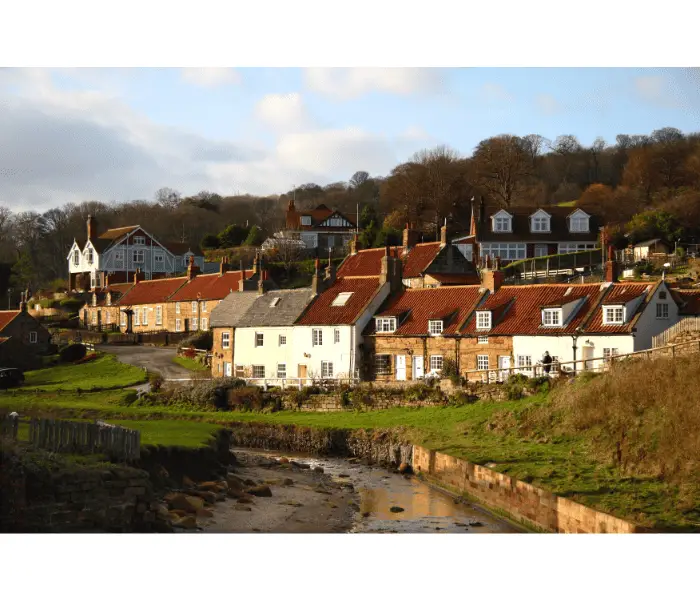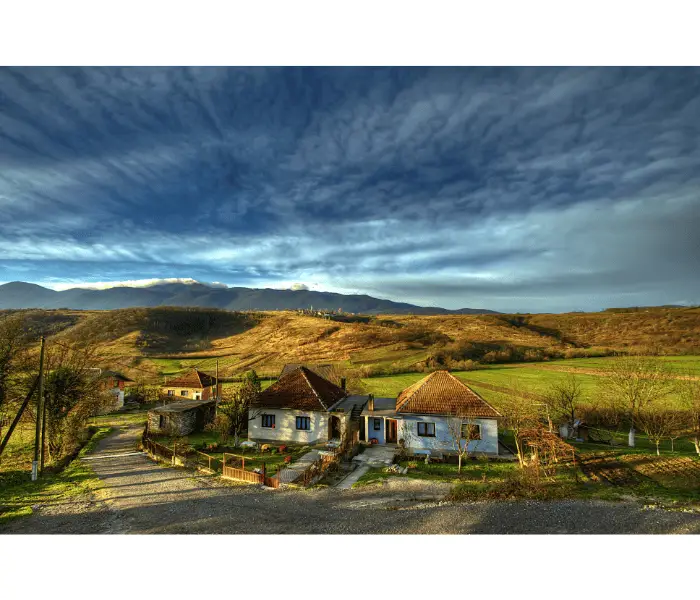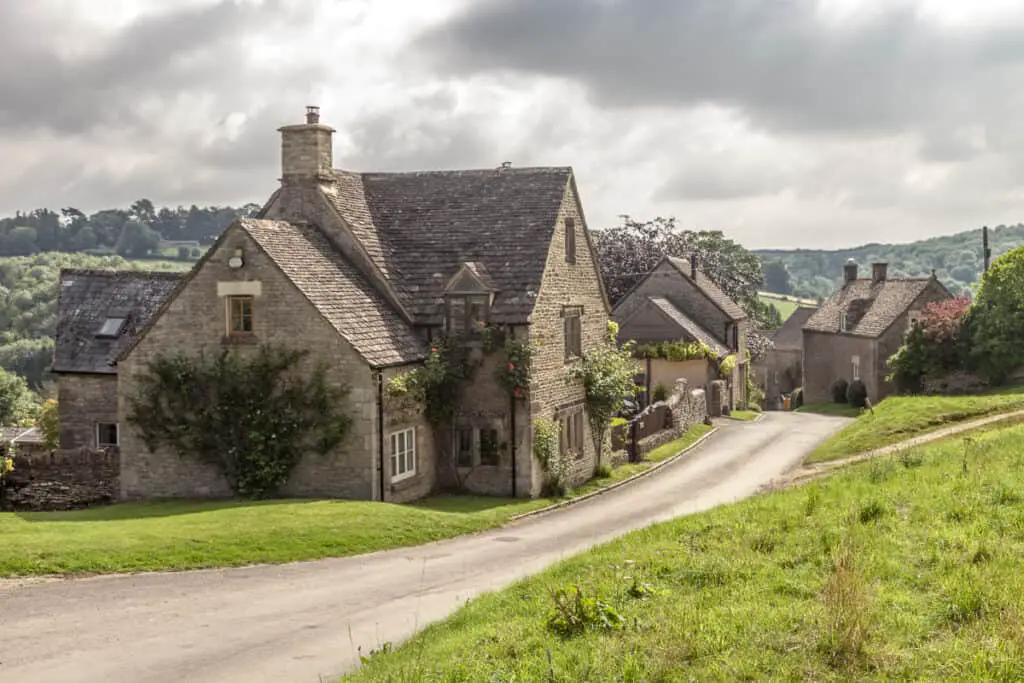Understanding the differences between a village and a hamlet isn’t as easy as, say, a village and a town. However, once you understand the definitions of both, the differences are fairly clear.
So, let’s look at the differences between a village and a hamlet, starting with a definition of the two.
What Defines a Village from a Hamlet?
In British terminology, a village is a small collection of houses with a church. Generally, they have small populations and are located in rural areas.
This isn’t a clear-cut definition, though, as urban villages exist, as do villages with populations of more than 10,000.

What is a Hamlet?
A hamlet is the smallest recognised settlement in British geography. It can technically be a single house, but it’s more commonly used to define a small, rural hamlet settlement that lacks the specific characteristics of a village.
Specifically, hamlets don’t have churches, administrative buildings, or village halls. If they have these features, they’re a village.

Hamlet Meaning
Another hamlet meaning is the secondary settlement in a civil parish. This is the lowest form of government district that typically includes a few settlements.
The main settlement is a village or town, although there are some that have cities as their primary settlement. In rural settings, the main settlement is a village, while the secondary settlement is a hamlet.

The History of Villages and Hamlets in the UK
The history of villages and hamlets is pretty similar and has an unusual link. It’s believed that the terms came into use during the Norman period of English history, as both have roots in Old French.
Interestingly, though, their roots go back further still. The word village comes from the Latin villaticum, meaning a farmstead with outbuildings. The Old French term village meant a group of houses and other buildings.
Hamlet comes to English from Old French through Frankish. It’s from the Old French word hamelet, meaning small village, which comes from the Frankish word ham, meaning village.
This is also the root of the -ham part of British place names, such as Birmingham, Southampton, and Rotherham. It literally means village.
Both village and hamlet came into use around the 14th century, a period when English administration went through changes. This is the main reason why hamlet simply means “little village” because it was a matter of distinction.
Are Hamlets Smaller than a Village?
Hamlets, by their very nature, are smaller than a village. In fact, the main definition of a hamlet is a small village that lacks the main village buildings. For example, a hamlet won’t have a pub or church.
There’s no strict size definition for a hamlet, but it’ll typically have a population of less than 100 collected into several residential buildings.
The key distinction between a hamlet vs village is the public buildings, but the lack thereof in a hamlet is due to the smaller population.
Historically, hamlets would be settlements collected around a single enterprise, such as farming, milling or fishing. While this is also true of villages, hamlets are considered less developed or more economically focused.
This is because public buildings, like the ones mentioned above, arose as settlements grew. They didn’t need to turn into towns to justify having a pub or church, but these are the kinds of buildings you’d find in a hamlet settlement with enough people to warrant a public building.
Those living in hamlets would have to travel to the nearest village for these amenities.
What is the Difference Between a Village and a Hamlet?
Although the key points may already be obvious, let’s break them down to highlight the differences between a village and a hamlet.
Structure and Location
Villages and hamlets both exist in rural locations, although villages can also be urban. But the main difference is their structure.
Villages are typically centred around a focal point, such as the church or village green. From there, you can expect a collection of shops and perhaps a park, with residential buildings radiating out in a fairly regular pattern (by British architectural standards, at least).
Hamlets, on the other hand, are clustered settlements that usually won’t have a similar focal point. Instead, they’ll be grouped around a central road but without much of a coherent structure. For example, we could consider 3 houses built along a B-road with nothing else around them to be a hamlet.
Size
A hamlet typically has a population of fewer than 100 people, although it can be as small as a single household. Villages generally have a population of between 500 and 2,500, after which point, they’re usually classified as a town.
However, there are numerous villages across the UK with much higher populations. For example, Bradfield in South Yorkshire has a population of 17,000, while Lancing in West Sussex has a population of 18,000. These are anomalies, though, and are often still villages because residents vote against town status.
Buildings
The key difference between a village and a hamlet are the buildings, or lack thereof. A village features buildings related to communal use, such as religious buildings, pubs, administrative centres, etc.
A hamlet specifically lacks these buildings. In short, a hamlet is only a settlement by default because it consists of residential buildings located near one another. Hamlets are linked to nearby villages by necessity of its facilities.
The reason for this is generally because hamlets are administrative spaces rather than defined settlements. Their existence is relevant for things like the census and postal service more than a recognition of a community.
Difference Between Hamlet and Village
So, there you have it, the difference between a hamlet and a village. Despite them being fairly similar settlements, the hamlet meaning and distinction is as clear-cut as that between a town and a city, and even more so than a town and village.
Next time you’re driving around the countryside, amaze your travel companions with these facts about how to differentiate between a hamlet and a village. They’ll definitely love you for it!

